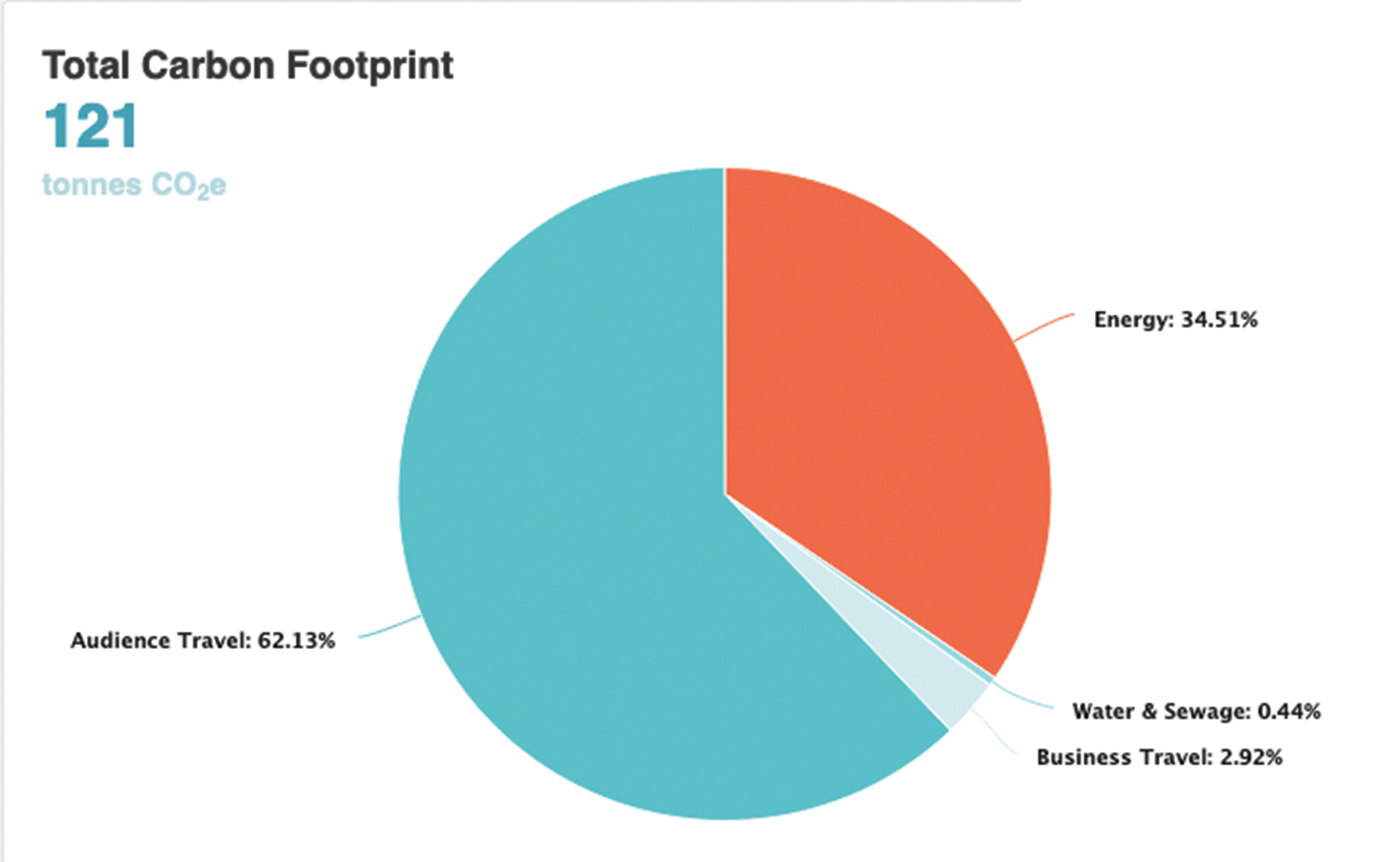
Photo — Michel Catalisano
OPINION
Creative Green Tools
Fighting the Climate Crisis One Footprint at a Time
Devon Hardy
The Creative Green Tools (CG Tools), developed by UK-based charity Julie’s Bicycle, are a set of carbon calculation and reporting tools specifically for the creative industries. Used by over 3,000 organisations across 50 countries, they help us understand the environmental impacts of cultural buildings, offices, outdoor events, tours and productions. The quest to adapt the CG Tools for the Canadian cultural sector formally began almost 2 years ago, the manifestation of conversations and initiatives 10 years in the making.
The CG Tools enable organizations to calculate and reduce their carbon footprints, and then amalgamate this data to create a complete picture of the sector’s impact on the environment, as well as how it changes over time. However, the potential implications of such a program go far beyond simply democratizing carbon footprinting practices. Accessible carbon footprinting tools could provide a concrete first step for the sector to engage with climate change, out of which new opportunities for collaborations, knowledge sharing and innovation can grow.
Working together to meet science-based targets will also become an option. Deep emissions cuts are needed to stabilize the concentration of greenhouse gases in the atmosphere and avoid the most catastrophic impacts of climate change, and understanding our impact as a sector will enable us to be more strategic as we work to meet fast-approaching planetary deadlines.
With financial support from the Canada Council for the Arts’ Sector Innovation and Development fund, the Quebec Drama Foundation (QDF) carried out research and consultation work on the feasibility of implementing a carbon calculation and reporting platform — specifically, the Creative Green Tools — in Canada. While the CG Tools had been remarkably successful in the UK, it didn’t guarantee they would be successful here. Our political boundaries encompass almost 10 million square kilometres, and individual regions within those boundaries can have drastically different weather patterns, cultural landscapes, economic realities and transportation options. We also need to prioritize the Indigenous communities that have fought long and hard for environmental protection, yet who have suffered greatly under Canadian and globalized colonial institutions. Without proper consultation, we risked implementing a framework that didn’t fit for the realities of our cultural sector, or that reinforced colonial structures.
Consultation took several forms, including facilitated, small-group discussions on Zoom, surveys, and engagement of a pilot group in user testing. Over the course of a year, our network grew to include collaborators in every province and territory who represented museums, music groups, theatres, publishers and everything in between, and whose mandates support black, Indigenous, POC, queer and disabled communities. Now we are working to turn the feedback from these organizations into action, with a tentative plan to release the Canadian CG Tools in 2022. As we continue to have meaningful conversations with our community, we will build an environmental framework for the country that is not only effective, but equitable and inclusive.

As museums and museum workers, you have an important role to play. If the museum community as a whole were to commit to reducing the carbon footprint of its activities, contributing toward the growing societal awareness of the climate crisis through programming and exhibitions and mobilizing to affect change at a policy level, the positive impacts would be immense. Seeing the cultural sector lead the way would also almost certainly create a ripple effect out to other communities and industries. After all, we are leaders in societal transformation.
There are already a number of quality resources available to museums and other cultural institutions who want to engage in climate action, and once the Creative Green Tools have been launched in Canada, even more possibilities will begin to emerge. In the UK, Julie’s Bicycle’s Museums Environmental Framework 2017 works in tandem with the Tools to serve the sector. In Canada, the CMA’s Sustainable Development Guide for Canada’s Museums is a compendium of sustainable solutions for which the Creative Green Tools will soon be able to provide more context.
Museums already act as hubs for learning, understanding and creating opportunities for future growth. The climate crisis may be the greatest challenge humanity will ever encounter. Museums will have to harness their unique resources and commit to taking action in the face of these challenges and they will have to do so soon. I, for one, look forward to seeing how the community rises to the challenge. M
Devon Hardy is an environmental professional whose work combines her technical knowledge of environmental sciences with her passion for arts and culture. She is currently leading the Canadian Creative Green Tools Adaptation project.
The CMA is a proud partner organization of this initiative. For more information, please visit https://linktr.ee/cgtoolscanada
